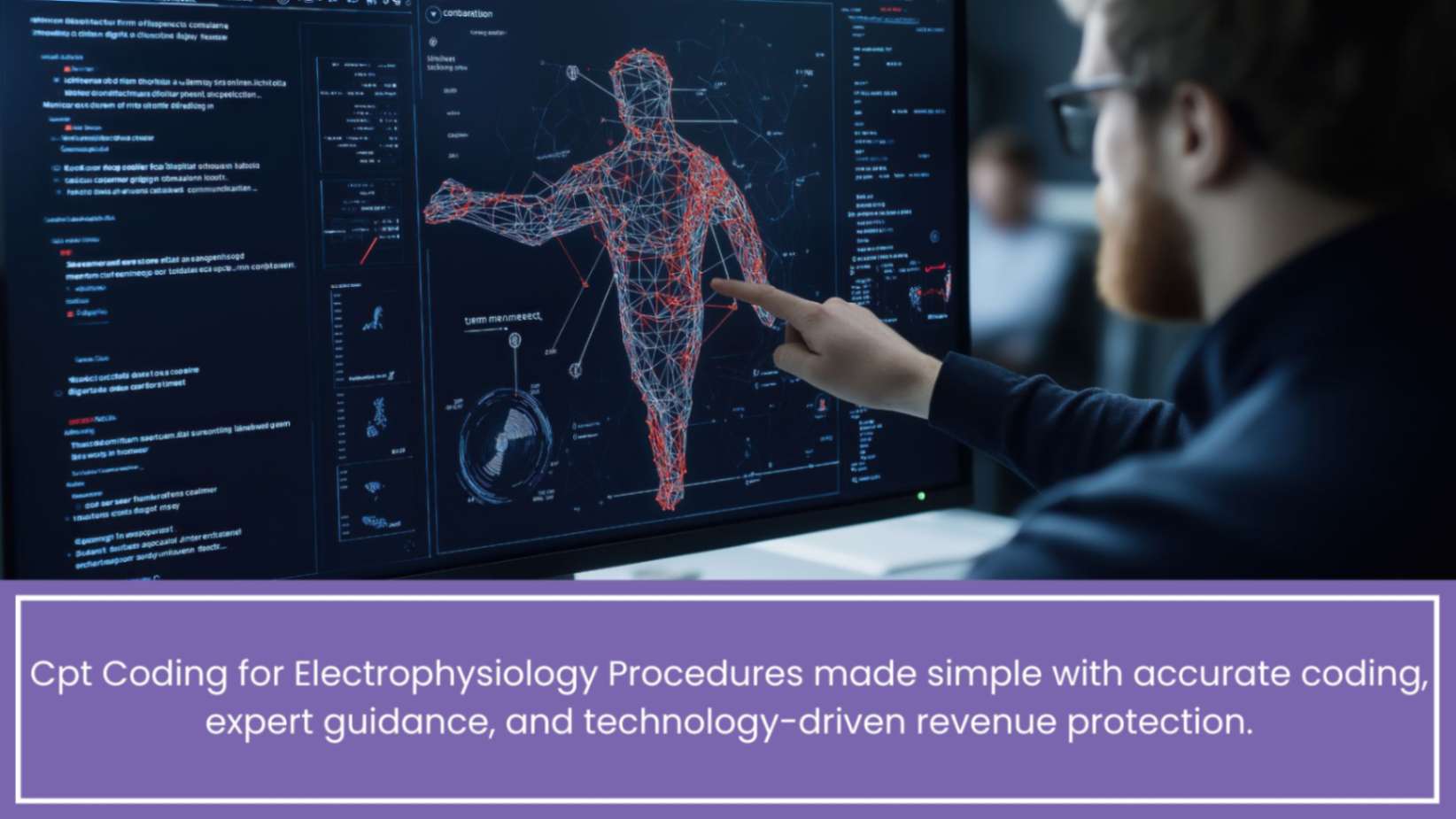Art of Radiology Coding: Key Principles and Pitfalls to Avoid
In radiology practices, the role played by accurate coding is indisputable. It ensures that the rendered medical services are properly documented for maximum reimbursements. Radiology procedures consist of CT scans, MRIs, and X-rays. They are effective diagnostic tools for detecting and treating different medical needs. Accurate coding for such procedures brings about appropriate reimbursement rates for delivered patient services while ensuring that the revenue streams are optimized continuously and are not impacted by coding errors and discrepancies.
Radiology coding is intricately complex due to the various imaging procedures and complications of coding guidelines. Precision in radiology coding necessitates an accurate understanding of CPT and ICD codes for imaging modalities and specific diagnostic needs. Inaccuracies in coding can result in claim denials, delayed coverage, or even legal disparities, ultimately leading to ineffective revenue streams for healthcare facilities. Therefore, it is essential to master the art of radiology coding to emerge successfully in the ever-changing realm of radiology.
Table of Contents
Understanding Radiology Coding Principles
CPT codes help identify rendered medical procedures and services to patients, performed by the healthcare providers. The most common codes in radiology are assigned to procedures including X-rays, ultrasound, CT scans, nuclear medicine studies, and MRI. Each one is allocated with unique CPT codes based on features like the part of the body imaged, the complexity of the given procedure, and if contrast elements were put to use. It is crucial to understand these codes for bringing in accurate radiology documentation and billing.
ICD-10 codes help with the classification of diagnoses in the healthcare environment. In radiology, ICD-10 codes are leveraged to document the medical indications or conditions, identified through proper imaging studies. In addition, these codes bring in effective information to carry out clinical research, population health management, and insurance claims processing. Common radiology diagnoses include infections, fractures, and tumors. Precision in choosing ICD-10 codes is imperative to account for the medical needs of imaging studies and ensure adequate reimbursement.
In-depth documentation is crucial to attain precision in radiology billing and coding. Healthcare providers must cautiously articulate the details associated with each patient visit, including the findings, imaging procedures applied, and the diagnoses. Clear and extensive documentation backs the proper assignment of accurate CPT and ICD-10 codes, guaranteeing billing of the rendered services and maximum reimbursements.
To boot, precision in documentation also plays a pivotal role in decision-making, legal compliance, and continuity of patient care. Proper training and education on the best practices for documentation are unavoidable for healthcare staff to ensure compliance with coding regulations and streamline revenue capture.
Key Principles for Radiology Coding Success
Leveraging coding manuals that are up-to-date and proper resources for accurate coding selection is a fundamental criterion for radiology coders. Staying on top of resources including CPT and ICD regulations ensures that coders choose the most precise codes that reflect the current medical trends, regulatory needs, and medical standards. In addition, utilizing electronic coding devices and software optimizes coding efficacy and reduces errors.
Having an in-depth idea of the coding policies, regulations, and modifiers apt for radiology procedures is indisputable. Coders must learn to capture nuances including imaging modalities, anatomical concerns, and technical, and professional components to differentiate the technical and professional services. It is essential to adhere to coding guidelines and maintain compliance with regulatory needs to cater to effective radiology reimbursements.
Employing best documentation practices is essential to guarantee coding adherence and alleviate any instances of denials. Detailed and extensive documentation that backs the medical need for the procedures carried out reduces the appearance of claim audits and denials. It is unavoidable to facilitate regular training and education to illustrate the best coding practices and ways to identify key improvement areas and alleviate compliance discrepancies.
Pitfalls to Avoid in Radiology Coding
Radiology coding is full of possible pitfalls that might result in revenue loss and claims denials. Using outdated resources and misinterpreting guidelines are common radiology coding errors that stem from revenue leakage and claims denials. Precision in coding of intricate imaging studies and procedures exhibits its complications, necessitating a requirement for high expertise and attention to detail. The answer is continuous training and education. This will enrich the healthcare staff with comprehensive knowledge of the coding principles associated with complex procedures. They are pivotal to bringing about compliance and accuracy.
In addition, it is imperative to address issues related to upcoding and under coding. These issues can result in inaccurate billing and violations in compliance with regulatory needs. Regular audits, continuous education of healthcare staff, adequate training, coding compliance programs, and such are vital to alleviate these billing concerns and ensure maximum reimbursements.
Strategies for Radiology Coding Excellence
Systematic examination of the coding and documentation can help healthcare facilities determine and locate the areas prone to errors, inconsistencies, and methods to improve overall efficiency. Regular auditing and reviewing of coding practices are also pivotal aspects to ensure compliance and precision. Such systematic auditing aids in detecting coding errors and discrepancies, including upcoding, under coding, and bundling. These inaccuracies in coding can result in revenue loss and claims denials. In addition, audits generate valuable insights on staff performance, and areas that demand training, empowering targeted interventions for improved proficiency in radiology coding.
Ongoing education and training are paramount to stay abreast of the ever-changing coding guidelines and understand the best practices, and regulations. Radiology coding is an evolving field with ongoing changes, and updates, demanding continuous education to stay proficient. Training programs must constitute topics like ICD and CPT coding systems, updates in reimbursement guidelines, and radiology coding regulations. By investing in employee development, healthcare practices can guarantee that their coding experts remain qualified and compliant with coding regulations.
Technology is an insurmountable element in today’s world. It plays a pivotal role in revolutionizing industries, including healthcare. Proper implementation of technology and carefully leveraging coding software solutions furnished with coding prompts, built-in systems for validation checks for enhanced coding, and electronic code lookup, help in reducing the occurrences of discrepancies in codes and bring about adherence to coding policies. To boot, technology can automate recurring tasks in coding, making more space and time for coders to focus on the more complex aspects of coding. By leveraging technological innovations, radiology coders can streamline coding, and improve coding accuracy, productivity, and overall revenue flow.
Closing Words
Mastering coding practices in radiology is essential for coders to emerge victorious in the battle of delivering maximum reimbursements while ensuring compliance with billing regulations. Radiology procedures are not just mere procedures but revolutionary aspects of modern medicine. Therefore, the need for precise coding is indisputable. Exploring the complexities surrounding radiology coding calls for comprehensive understanding, continuous education, and extensive documentation.
Radiology coders must adhere to key aspects like updated regulations, resources, and guidelines, and cater effective documentation to optimize revenue streams and reduce discrepancies. Acknowledging the pitfalls and inaccuracies is pivotal for maintaining financial integrity. Leverage potential strategies including training, audits, and technological advancements to improve efficiency and precision.
Choosing the right partner is also a vital step in the medical billing process. Practolytics offers comprehensive RCM solutions customized to unique healthcare practice needs. With our extensive knowledge and skillful experts in radiology billing and coding, we bring about maximum reimbursements while staying compliant with regulatory standards. Streamline your billing process with Practolytics to reduce the occurrence of denials, enhance the billing workflow, and improve revenue capture. Drive financial success and emphasize exceptional patient care by trusting Practolytics as your RCM partner.
ALSO READ – Finding Success: Credentialing Essentials for Radiology Practices
Talk to Medical Billing Expert Today — Get a Free Demo Now!






